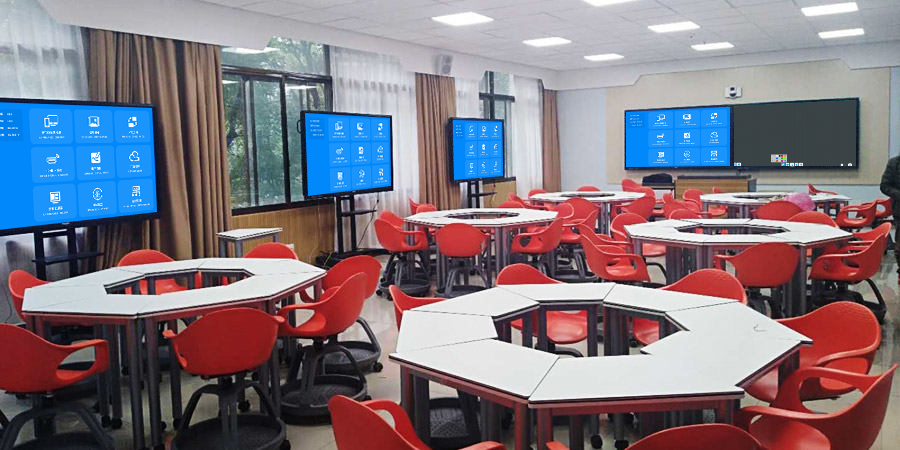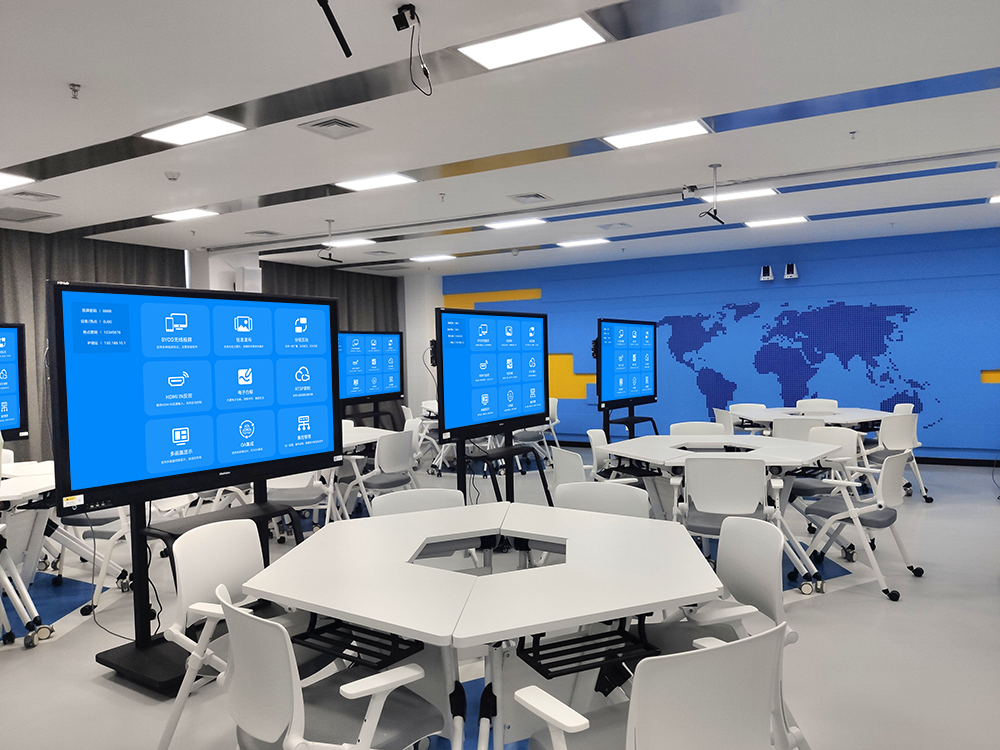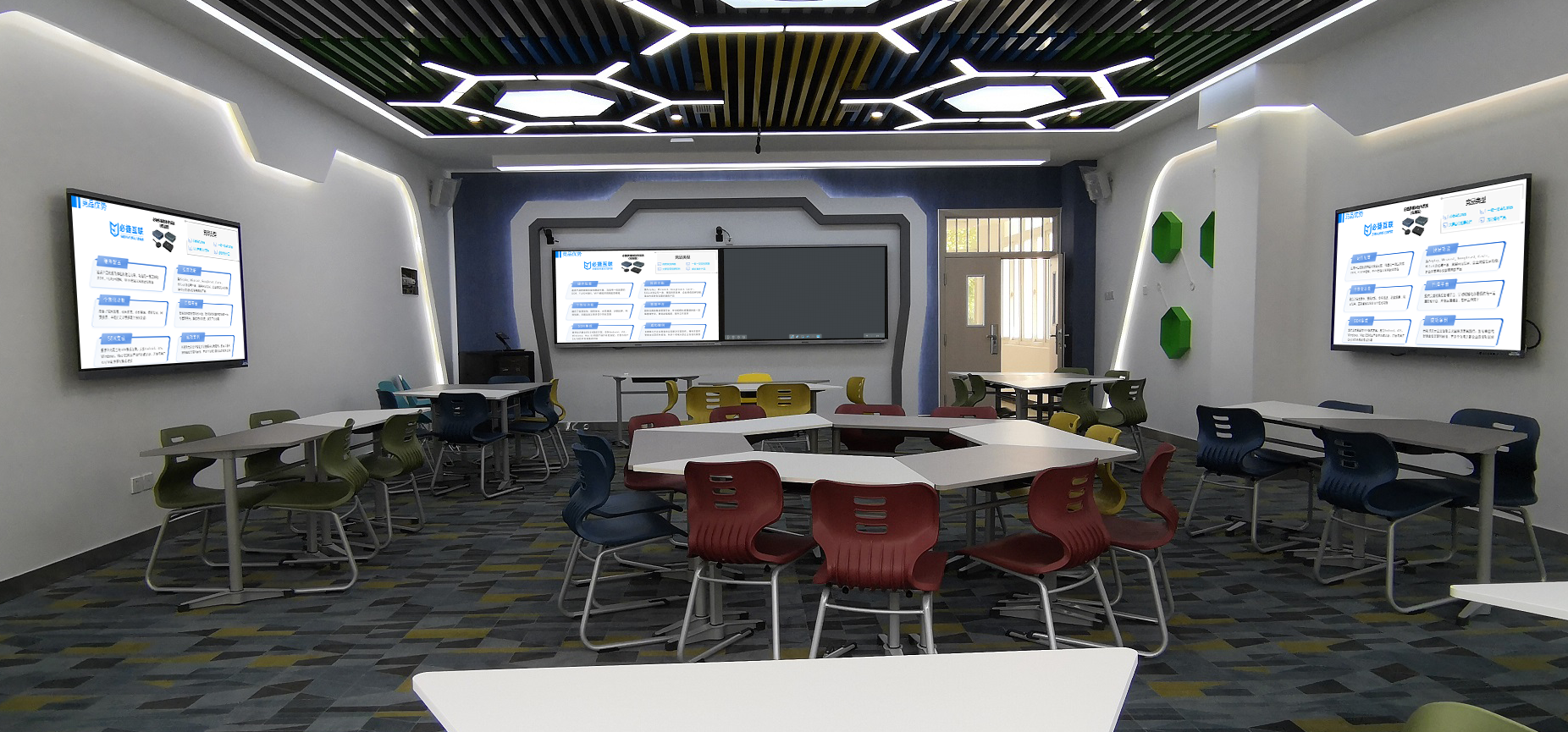Group Discussions: Elevating Team Collaboration from “Disjointed Debates” to “High-Efficiency Co-Creation”
In corporate meetings, classroom teaching, and project reviews, group discussions are a core method for sparking diverse ideas and rapidly solving problems. However, traditional discussions often suffer from challenges like difficulty in synchronizing group outcomes, inefficient cross-group communication, and the easy loss of inspiration, frequently hindering the depth of collaboration. A smart system specifically designed for group discussions is now reimagining processes through technology, making every intellectual exchange more focused, smoother, and more productive.
I. Multi-Screen Architecture: “Instant Interoperability” for Group Outcomes
In traditional group discussions, teams often record ideas on paper notes or individual whiteboards. When it’s time to report, they have to transcribe or photograph and upload, which is time-consuming and prone to missing details. This smart system, through a “main screen + group screens” multi-screen network, breaks down information silos:
- Real-time Group Screen Recording: Each group is equipped with its own screen. Members can use the electronic whiteboard to draw mind maps, annotate key points in documents, and share case studies via screen mirroring. Content is dynamically saved as discussions unfold, preventing inspiration from being lost due to “not enough time to record.”
- One-Click Cross-Group Push: When a group needs to share its interim results, there’s no need to reorganize. A simple click of “Push to Main Screen” instantly synchronizes the content to the main large screen for everyone to view directly, eliminating inefficient switching and waiting.
- Main Screen Summarization and Comparison: The facilitator can display the results of 3-4 groups side-by-side on the main screen, allowing for direct comparison of differences (e.g., cost advantages of solution A, execution details of solution B). This guides all participants to analyze problems from multiple perspectives, accelerating consensus.

II. Wireless Interactive Design: “In-Depth Collaboration” Anytime, Anywhere
The value of discussions lies in immediate feedback, but issues like cable restrictions and complex operations often interrupt the flow of thought. The smart system enables smoother collaboration through fully wireless interaction:
- Seamless All-Device Access: Members’ phones, tablets, and laptops can connect to the group screen by simply scanning a QR code or entering a mirroring code, without needing to install drivers. They can upload materials, add viewpoints, and even directly annotate and edit on the screen using their phones, ensuring everyone’s voice can be “seen.”
- Real-time Annotation and Follow-up Questions: When one group is presenting, other members can annotate questions on the main screen content from their own devices (e.g., “Source of this data?”). These annotations sync in real-time to the facilitator’s terminal, facilitating targeted questioning and preventing situations where issues are “noted for later discussion” but never addressed.
- Borderless Mobile Discussions: Even if a member temporarily leaves (e.g., to retrieve materials), they can remotely view their group screen’s content and send additional viewpoints via their phone, ensuring their thoughts aren’t interrupted. This is particularly suitable for large conference rooms or multi-location discussions.
III. End-to-End Data Retention: Making “Flashes of Insight” Traceable and Reusable
Often, brilliant ideas from group discussions are lost once the meeting ends, making it difficult to translate them into actionable plans. The smart system ensures that every discussion leaves a “trace” through a closed data loop:
- Automatic Process Archiving: The system real-time records each group’s screen content, annotation history, and discussion duration, generating a complete discussion archive. It supports retrieval by “group” or “time period,” and after the meeting, it can be exported as a PDF or video with one click, facilitating detailed review.
- Smart Material Library Classification: Documents, images, and videos used during the discussion are automatically categorized into a cloud material library, labeled with the source group and topic (e.g., “Marketing Dept Q3 Strategy Discussion – Group 2 Case Study”). Similar future projects can directly access these references, reducing repetitive work.
- Outcome Decomposition and Follow-up: On the main screen, the final consensus can be broken down into specific tasks (e.g., “Group A responsible for cost estimation,” “Group B to optimize execution steps”). The system supports linking calendar reminders and tracking completion progress, ensuring discussion outcomes are truly implemented rather than remaining “talk on paper.”

IV. Flexible Scenario Adaptation: From 5-Person Brainstorms to 50-Person Co-Creation
Discussion needs vary significantly in scale and purpose. The system precisely matches these needs through scenario-based functional design:
- Small Brainstorms (5-8 people): The group screens support a “free doodling” mode, where members can freely drag text boxes and insert images to quickly build impromptu ideas, ideal for open-ended discussions like product creative sessions or event planning.
- Medium Reviews (10-20 people): The main screen supports a “voting and polling” function. After each group presents its proposal, members can anonymously vote via their phones, with results instantly generated as a bar chart, aiding objective decision-making and avoiding bias from “minority dominance.”
- Large Co-creation (30-50 people): Supports “main venue + sub-venue” linkage. Content from sub-venue group screens is synchronized in real-time to the main screen, and comments from the main venue are instantly fed back to the sub-venues. This caters to large-scale scenarios like corporate strategy workshops or inter-campus teaching discussions.
The essence of group discussions is to foster a chemical reaction of ideas from different perspectives. This smart system breaks down spatial limitations through multi-screen linkage, eliminates operational barriers with wireless interaction, and preserves value through data retention. Ultimately, it empowers every group discussion to transition from “disjointed debates” to “high-efficiency co-creation,” making the path from idea generation to implementation shorter, smoother, and more impactful.